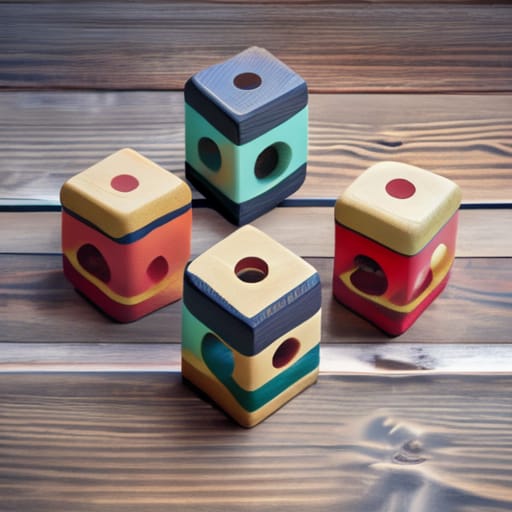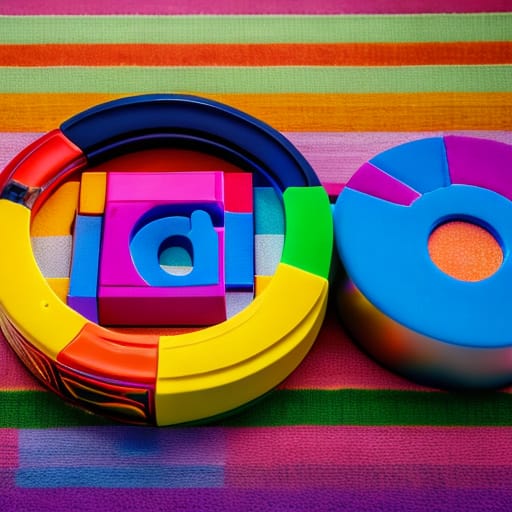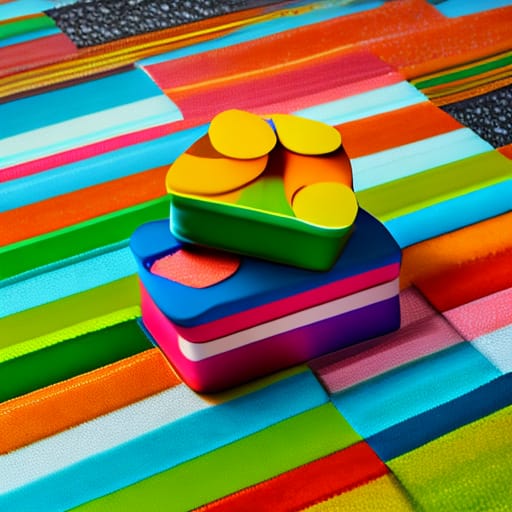Are you looking to spark your child’s creativity and support their development through play? Educational building blocks are a classic, versatile toy that builds vital skills. With the right set of blocks suited to your child’s age and interests, these brain-boosting bricks offer open-ended play that grows with your child.
This comprehensive guide covers everything parents should know, from age recommendations to top block sets on the market. Read on for tips to select blocks that inspire imagination while preparing little ones for academic success.
Why Building Blocks Are an Essential Developmental Toy
- Promote problem-solving as kids experiment to assemble structures
- Improve fine motor skills and hand-eye coordination through manipulation
- Build spatial awareness and familiarity with patterns, shapes, and colors
- Flex creativity, logic, and planning through construction projects
- Practice STEM (science, technology, engineering, math) principles through play
- Allow independent play as well as collaboration with peers
- Suit a wide age range, from toddlers to elementary students
- Entertain for hours while supporting growth and mastery
Whether simple wooden blocks or high-tech bricks with motors, building blocks check all boxes for an educational toy. They top most lists of toys encouraging healthy development while delivering foolproof fun!
Key Benefits of Building Blocks by Age
Building blocks adapt well to a child’s emerging abilities at different ages. Understanding block features suiting your child’s needs ensures you select engaging blocks boosting the right skills.
Infants and Toddlers (1-3 years)
At this budding builder stage, child development centers on sensory exploration and fine motor growth. Simple block sets allow little hands to grasp, stack, and knock down creations. Look for:
- Basic wooden or plastic blocks
- Chunky dimensions for small hands
- A storage bin or bag
- Textures, bright colors to stimulate senses
- Alphabet and number décor on blocks
Aim for around 30-40 pieces to start. Allow your toddler to handle the blocks while supervised as they learn concepts like gravity!
Pre-K and Kindergarteners (4-6 years)
As preschoolers grow more coordinated and adept at manipulating objects, they enjoy assembling and knocking down creations. More complex blocks fascinate kids, training dexterity, decision making and planning skills. Opt for:
- Interlocking block sets
- Themed sets based on interests like zoo animals or transportation
- Blocks of varying shapes like triangles, arches
- Mix of sizes from small to oversized
- Around 60-100 blocks encourages creativity
Guide play to reinforce STEM concepts like balance, symmetry, geometry basics and more using vocabulary. Building collaboration skills is key at this age too.
Grade School Kids (6 years and up)
Bigger kids become absorbed in construction and storytelling during block play. Advanced sets allow them to build increasingly elaborate structures, training spatial reasoning and planning abilities. Choose:
- More specialty pieces like windows or doors
- Building plates or boards as foundations
- Hundreds of pieces supports complex projects
- Robotics, motors add STEM appeal
- Compatibility with other major brick brands
Inspire advanced skills by building castles, bridges and more together. Competitions and timed challenges add extra layers of learning too!
Top Rated Building Block Brands for Kids
With a variety of materials, features and themes available, educational block brands cater to all ages. These top names lead the way in quality, innovation and versatility:
Lego stands atop the building block empire, with an endless variety of sets featuring plastic interlocking bricks. Disney and other hot licenses keep kids engaged while more complex robotics kits build tech skills.Kinderblocks offer a budget Lego alternative using colorful wooden blocks suited to small hands.
Magna-Tiles and Picasso Tiles clear plastic shapes inspire open-ended creativity to build everything from animals to abstract art. These award-winning magnetic blocks click together from every angle, sparking 3D spatial skills.
Mega Bloks interlock with Lego along with offering big chunky blocks for toddlers and preschoolers under the First Builders name.
Wooden Wonders makes one of the top block collections crafted from natural maple wood. From chunky picks for babies to a zoo animal alphabet set for preschoolers, these handsome heirloom-quality blocks inspire imaginative play.
Hape uses eco-friendly wood and baby-safe paints across their developmental toy offerings, including alphabet blocks, quoits and more.
Melissa & Doug is a trusted name for sturdy wooden toys, including handsome unit blocks supporting STEM skills sold in 60 and 100 counts. Grimm’s rainbow wood building bricks stack like dominos, promoting engineering talents.
For a modern spin, SmartMax magnetic building sets allow aspiring architects to defy gravity as structures lock together at any angle. Or OYO Sports customizable mini figures and construction bricks fuse old and new school play.

What to Look for When Choosing Building Blocks
With an abundance of block types and brands available, focus on a few key considerations to narrow options:
- Age – Match developmental stage for best results from blocks play
- Interests – Pick themes that excite kids from princesses to dinosaurs
- Number of pieces – Start small (under 50) working up to 100+ blocks
- Skills targeted – Do you want to reinforce alphabet, STEM concepts or more?
- Materials – Consider plastic, wood or magnetics based on safety, creativity needs
- Budget – Building blocks span from $15 basic sets to $100+ deluxe kits
- Compatibility – Can these blocks integrate with existing Lego or other brands you own?
- Packaging – Look for a sturdy storage bin or bag
- Consumer reviews – Check ratings and parent feedback before buying
Finding the “just right” set boosts engagement and skill building during independent and shared play. You can always start with a small kit and add to the collection over holidays and birthdays.
Getting the Most Value from Building Block Play
The best developmental toys require engaged participation and interaction from caregivers during play. Follow these tips to encourage learning through building blocks:
- Allow toddlers to freely explore shapes, textures, weight when first introduced to blocks
- Get on the floor to build side-by-side, narrating your process
- Inspire storytelling by having kids describe their creations
- Introduce new vocabulary like ramp, tower, balance when structures emerge
- Pose challenges to foster persistence, problem-solving and flexibility
- Show real-world examples of shapes, architecture and physics they mimic with buildings
- Capture creativity with photos of block creations to place in memory books or share
Imaginative, unstructured play time is crucial for growth, so allow kids freedom in designing their own projects. Then engage with questions, challenges and feedback to guide next achievement levels.
Choosing Blocks to Suit Your Budget
One of the top advantages of building blocks is the vast range available, allowing families to select high quality toys on any budget. Here’s a quick guide to price points for starter sets:
Under $25 – Basic wooden block bundles, alphabet/number blocks
$25-$50 – Interlocking plastic/wooden themed sets, mega chunks, activity mats
$50-$100 – More complex builds like castles, bridges, 100+ blocks
$100+ – Deluxe kits with motors, lights, licensed themes from Disney, superheroes
Consider loosening purse strings a bit for an engaging set that outlasts trends, trains multiple skills and serves multiple kids over years. Prioritize classic wooden or interlocking plastic bricks over flimsy blocks that won’t stand test of time.
Promoting STEM Skills with Building Blocks
Beyond inspiring creativity and logical reasoning, building blocks provide a fun introduction to Science, Technology, Engineering and Math concepts. With guidance, caregivers can reinforce:
Science
- Gravity – What shapes/structures fall down easiest? Why?
- Measurement – How tall in blocks is your child? Sibling? You?
- Forces – Push blocks together. What direction do they move? How can you change direction?
- Simple machines – Make pulleys, levers, and ramps. What happens?
Technology
- Coding/Sequences – Create color patterns or numbered sequences in builds
- Electronics – Integrate lights, motors and sensors using kits
Engineering
- Spatial reasoning – Assemble shapes high/low, over/under, in/out, beside/between
- Architecture – Build common structures like arches, bridges homes
- Stability – Balance blocks in creative ways gravity allows
- Symmetry – Copy block patterns on one side to the other
Math
- Sorting – Group blocks by color, shape, or size
- Patterns – Replicate ABA, ABBA and more complex sequences
- Geometry – Identify shapes like rectangles and parallelograms
- Addition/subtraction – Count blocks as you stack and remove them
- Measurement – How long, tall or heavy are creations? Compare them
No need to turn playtime into lecture time, but casually highlight STEM concepts already embedded in building fun.

Shop Hot Selling Blocks on Top Retail Sites
Ready to start your search for the perfect building blocks to spark imagination while preparing little learners? Here are top educational block sets available on popular online toy retailers:
Amazon
- Melissa & Doug 100-Piece Wood Block Set – $28
- Magna-Tiles Clear Colors 32-Piece Set – $59
- PicassoTiles 60-Piece Magnet Toy Building Tiles Set – $39
- Lego Classic Large Creative Brick Box 10698 – $55
- MEGA Bloks First Builder Block Sets 80-piece- $15
Walmart
- Kinderblocks Wooden Building Blocks 80-Piece Set – $36
- Multicolor Wood Blocks Deluxe Set by Fanimation – $29
- PicassoTiles 60 Piece Magnet Building Tiles Set – $37
- OYO Sports customizable mini figures and bricks – $18+
- Mega Construx Pokémon Building Sets – $20+
Wayfair
- Grimm’s Large Wooden Building Bricks – $42
- ALAZA 60 Piece Kids Building Blocks STEM Learning Toys – $29
- Melissa & Doug 60-Piece Standard Unit Building Blocks Set – $23
- Battat Sound Puzzle Blocks Push Train Building Set – $26
- ECR4Kids Colorations Waffle Blocks Classic – $46
AliExpress
- IDAFOAM 50 PCS Children Educational Building Blocks – $16
- TOFUC 60 PCS Rainbow Building Blocks Soft Foam Toy Set – $14
- VAKIND Magic Puzzle Educational Blocks Toy for 1-8 Year Olds – $5
- Lingling 660 Pcs Brick Building Blocks Pack Compatible with Legoings – $39
- YEESAM Giant Building Blocks Soft Foam Play MatsTiles – $21
Comparison shop to find just the right set suiting your budget and kid’s interests!
Gift Ideas: Building Blocks Inspire Young Imaginations
Stumped on finding that perfect, playful gift for the little creator in your life? Look no further than classic building blocks! These top developmental toys open endless possibilities for learning disguised as fun.
Building block play frees young imaginations while sharpening skills from STEM concepts to social emotional growth. With designs suiting all ages, interests and price points, building bricks simply can’t be beat for gifting growing kids. Parents will also appreciate toys promising hours of independent entertainment while flexing brain power.
Stack your next celebration with quality blocks designed to last for years. Educational building blocks earn their rank as the gold standard toy investment proven to boost development. Watch kids beam with pride showing off castle, zoo and other custom creations only they can dream up!
Conclusion: Building Blocks Lay the Foundation for Skills
For over a century, humble building blocks empowered generations of innovators like Frank Lloyd Wright by honing spatial reasoning and creativity early on. Today’s sets integrate modern elements like robotics yet retain that enduring versatility across ages.
Simply put, these hands-on classics set the stage for achievement in core cognitive competencies from analytical thinking to manual dexterity. Building blocks unleash potential limited only by imagination itself. Mixing open-ended play with thoughtful guidance, blocks equip kids with the tools needed to erect milestones of mastery.
Spark your child’s success story today by selecting engaging building blocks customized to current abilities and emerging interests. Then watch proudly as these toys built for the job construct cornerstone capabilities brick by brick!
Frequently Asked Questions
What age should my child start with building blocks?
Blocks can benefit children as young as 12 months old. Start with basic chunky blocks for little hands learning to grasp. By ages 2-3, toddlers start actively building and enjoy knocking down creations.
What skills do building blocks develop?
Building blocks target a range of developmental areas from fine motor control to spatial reasoning, creativity, problem solving and early STEM skills like balance, geometry and physics concepts.
How long will my child play with building blocks?
Open-ended building blocks engage young kids for extended periods, often years, as they can create endless unique structures. Advanced interlocking block sets like Lego fascinate older kids for hours of independent construction play.
Should I guide my child or let them build freely?
Balance free play to spark imagination with some guided participation. Sitting side-by-side, ask questions about their designs, suggest challenges, introduce new vocabulary and highlight STEM learning moments.
What are building blocks made of?
Classic wooden unit blocks, chunky plastic blocks for toddlers and smaller interlocking bricks are all common options. Magnetic building tiles and newer materials like foam blocks offer additional variety. Eco-friendly wood, or BPA-free plastic suited to ages are ideal.
The right building blocks make playtime productive, laying a foundation of learning memories. Review this guide then pick the blocks sparking your child’s creativity and skills!
